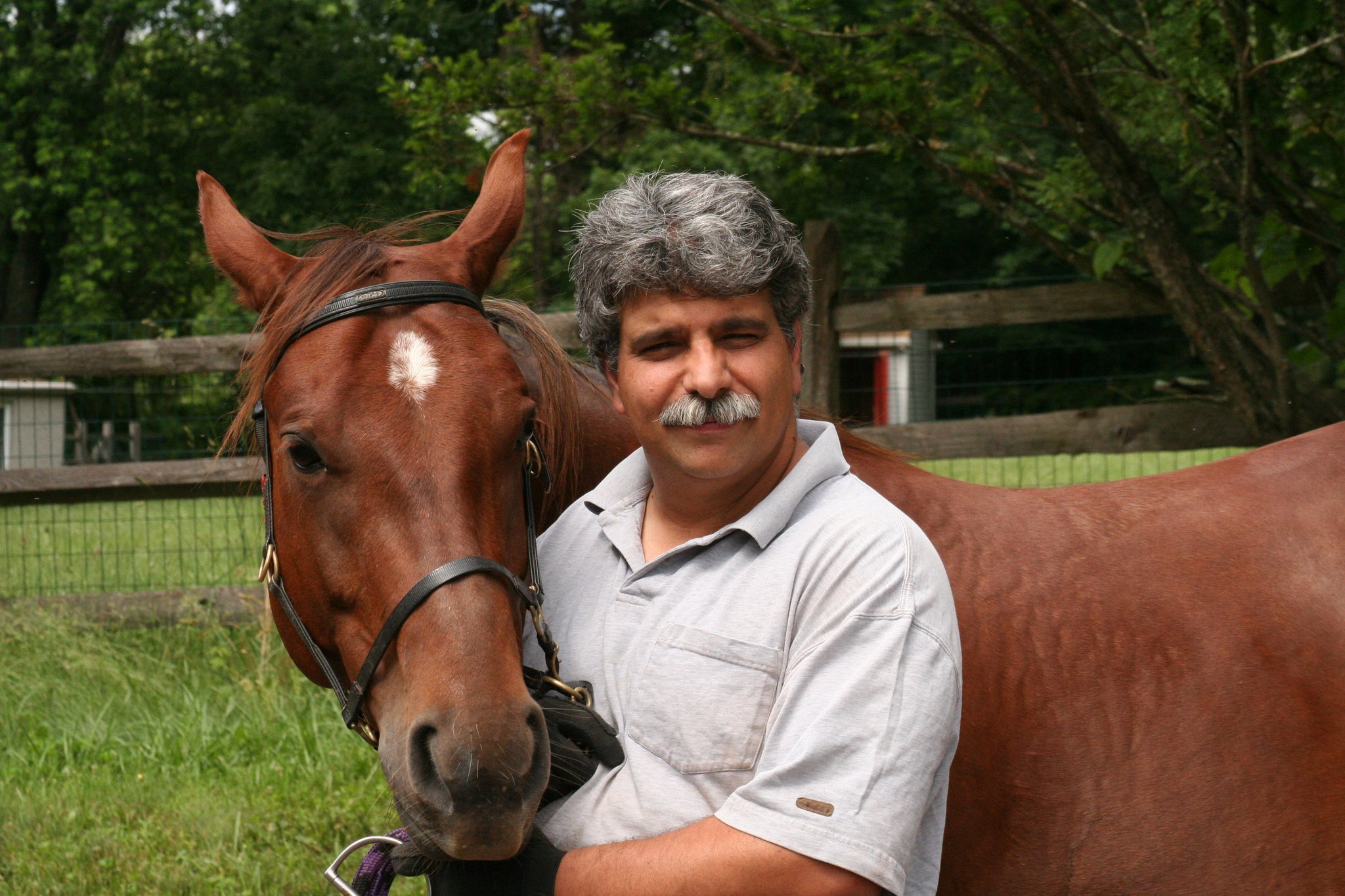When the Horse Feed and Supplement Companies are Lying to Us

“Critical Thinking” is a term that sums up a process of asking questions, doing research, comparing results and considering sources. The end result of this process should be a decision or opinion based on the data obtained.
Every marketing department of every company on the planet builds its marketing plan depending on the fact that the average consumer will not use many critical thinking skills when making a decision on using a product. This is truly unfortunate because we are in an age of easy access to billions of pages of information…and misinformation.
Since consumer education is a big part of my goals for this group I thought I would share the process I use when asked about or come across feed or supplements making claims of performance or efficacy.
Let’s Talk FUD
There is a classing tactic of sales and marketing departments going back to the 1950s. It originated with either IBM or Xerox but there is no certain point of origin for FUD.
FUD is an acronym for Fear, Uncertainty and Doubt, three of the strongest emotions a human has. These three emotions are used very effectively to convince buyers that;
- They have something to worry about (Fear)
- Their business or horse or dog or child may be affected by this worry (Uncertainty)
- They may be missing a solution to the problem by not using my product (Doubt)
FUD was my friend for many years in the highly competitive technology industry.
FUD isn’t necessarily a bad thing since there are many real problems and great solutions for them. The worst combination is an unproven solution for a real problem.
So let’s look at how to work with FUD.
Before we get started it is important to note that critical thinking requires an open and unbiased mind since we never want to seek to prove that something is “right” or “wrong”. With the vast amount of information available at our fingertips it is easy to find information to support our personal point of view. We learn nothing in this way.
What is the Claim of Efficacy or Performance?
The process begins for me when I see a claim of efficacy or performance.
Sometimes they really jump out at me because they fly in the face of what I know to be supported by sound science.
Other times I see a claim that I have little or no background data on which to call so I will follow the process and perhaps learn something new.
For this article I am going to use a claim that caught my eye recently because I felt that the claim could potentially cause harm to a horse that required approved treatment for a common condition.
“Hyaluronic acid is more effective and safer than omeperazole in treating equine ulcers”.
Google “Scholarly Articles for X in Horses”
This search will usually yield any research papers published on a particular subject.
In this case I searched for “Scholarly Articles for Hyaluronic Acid in Treating Equine Ulcers”.
There is one study published by the Journal of Equine Veterinary Medicine in 2017. The study was conducted by Nathan Slovis DVM of the Hayguard Equine Medical Institute in Lexington, Kentucky.
So far, so good. It’s a legit study by an accredited author and from a solid Vetrinary Research Hospital.
The study does indeed show that hyaluronic acid in combination with polysaccharides has some efficacy in treating equine ulcers. Still good.
But the devil is in the details. Not all studies are created equally.
Anyone Can Publish a Research Study
Research papers can be as short as a single page or many thousands of pages. The one important common factor of any research paper is disclosure and transparency.
Disclosure and transparency are important to the credibility of the study because these factors enable the readers to make their own determination on the value of the results.
I could publish a paper on “The Effectiveness of Omega Match on Hind Leg Inflammation of a Twenty-six Year Old Thoroughbred”. I fed Raven Omega Match for ten days and she stopped stocking up in her hind legs. Conclusive? Probably not.
Research is costly and the bigger the study the bigger the budget. The key to a conclusive study is a high volume of data points. More tests, more horses, more control, more scientists, more professionals and more time. More money!
So let’s take a look at the disclosure and transparency of this study because Dr. Slovis was very honest in his assessment of the work. This is a cut and pasted unedited version of the disclaimer in the “conclusions”. I take no exceptions with his work but how the supplement company cherry picked the details in order to promote their product.
“We realize that our lack of controls is a weakness and limitation of this study. Our study was not conducted with a research cohort; instead, our subjects were adult horses in active training and participated at considerable expense to their owners.
“The presence and severity of ulcers change over time with or without intervention. However, this study is unique in that participants were active adult horses that remained in daily training, and stress and/or activity levels were not altered. Thus, we view these data as proof of concept to show the potential benefit of oral supplementation with a polysaccharide blend against gastric ulceration in the active adult horse.
“Conclusions: Our study reveals that a polysaccharide blend of 240 to 480 mg high-molecular-weight hyaluronan and 60 to 120 mg of schizophyllan administered daily for 30 days demonstrates ulcerative healing. Of the horses treated, 90% showed complete resolution and/or improvement in ulcerative areas, increased appetite, weight gain, and positive behavioral changes. Our study suggests that a polysaccharide blend represents a novel means to enhance gastric healing in the active horse. Additional investigations to further elucidate these findings and determine optimal protocols are warranted.”
I have highlighted some of the statements that provide me with the greatest concern but to summarize these are the high points I took away from the study.
- The scopes certainly show an improvement in most of the horses after the treatment period but without a non-treated control group to measure the improvement against it can’t be evaluated.
- Only 11 horses participated in the study
- There was no control group treated with Gastroguard so how can we determine efficacy against the approved treatment?
- The study wasn’t managed by professional scientists. Owners were provided with product and dosage instructions. Anecdotal observations were made by these owners and none were in a measurable data format. “Trigger seemed happier” is not a valid data point.
- The study NEVER claims that this protocol should be used in place of omeperazole as a primary curative treatment for EGUS. The company makes this claim.
Oh, here’s another cut and paste that may be of interest.
The author discloses that he has an affiliation with a related industry and may receive indirect financial gain via product promotion and sales associated with publication of this article.
Jim’s Conclusions
After reviewing this paper my personal impression was that although the data was incomplete and therefore inconclusive, the scopes showed an improvement in the horses participating in the study so there may be something to the claim.
If I had a horse that was exhibiting signs of gastric discomfort I might consider giving it a try. Of course, I would also be sure to adjust diet and consider other supplements that have been clinically proven to buffer stomach acid.
However, the implication of the company is that their product is a “safer” alternative to Gastroguard and the cost is less so it would be a better choice for ulcer treatment.
While I might give this product a shot in a horse that was a little cranky or getting picky with his hay I absolutely wouldn’t choose it to treat diagnosed or strongly suspected moderate to severe ulcers.
But I’m not finished.
It’s All About the Presentation
So let’s look at the FUD factor and what really troubles me about this product.
This company makes all kinds of claims that can’t be supported with science.
Here are some common terms to watch out for.
“Contains clinically proven ingredients!”
Great! What are they? Are these ingredients from the same source of the same quality as those used in the study? Are the ingredients available in an effective dosage?
“Clinically Proven Ingredients” doesn’t mean much unless the product itself has been tested for efficacy.
“This product also treats…”
These miracle supplements should have horse vets terrified. They fix everything! In this case “also treat the hindgut!” because it’s pH tolerant so it will make it to the hindgut. Really? Has anyone measured before and after samples of cecal fluid to prove that? I’m sure not.
“Studies have shown” means there may be some indication or correlation of efficacy. I use this phrase when discussing things like magnesium and insulin resistance.
“Studies have shown a possible correlation of supplemental magnesium in improving insulin sensitivity for metabolic horses. Keep in mind there is no clear evidence yet but a little extra mag ox isn’t going to hurt as long as you keep up the proven diet protocols we’ve been using”
Ask the Product Manufacturer to Provide Their Research
I don’t know about you but before I choose a supplement to administer to my horse I want to see legitimate support for their claims.
The responses will range from no response to a full, legit and complete study. Sometimes I will receive a piece of their literature echoing the claims. Sometimes studies that show the efficacy of ingredients. Often I will receive a study that has nothing to do with the product and once in a while I will see a study that actually refutes the manufacturer’s claim!
In the case of this example when I asked for supporting research this company sent me the Slovis study that I’ve already discussed along with another study by a group of European veterinarians and scientists that is actually a very well done paper. This study shows that there is a 23% chance of a horse suffering from a rebound acid effect from using an omeperazole compound treatment for ulcers and it’s advisable to administer omeperazole with a buffering agent in case there is a rebound problem.
The problem is that the supplement manufacturer is using this study as a smoking gun to say that treating ulcers with omeperazole may be dangerous and their product is a safer alternative.
FUD is all about the presentation
Some truth. A little spin.
I have my favorite gut supplement because I’ve seen it make wonderful changes in horses. In every one of the hundreds of times I’ve recommended this fine product I have NEVER failed to explain that the product is NOT a curative compound for ulcers. Many times when the symptoms and situation indicate a high probability of moderate to severe EGUS scores I will strongly advise consulting the owner’s veterinarian and set up an approved treatment plan.
As a group of horse owners we probably aren’t going to change the regulations concerning horse supplements and feeds to be more protective of them. However, if we are armed with knowledge giving us the confidence to challenge these companies we can protect our horses and force the companies to be more transparent.
Ask questions. Do research. Don’t give into desperation to help your horse. You could do more harm than good.
Hold these companies accountable for their claims.
